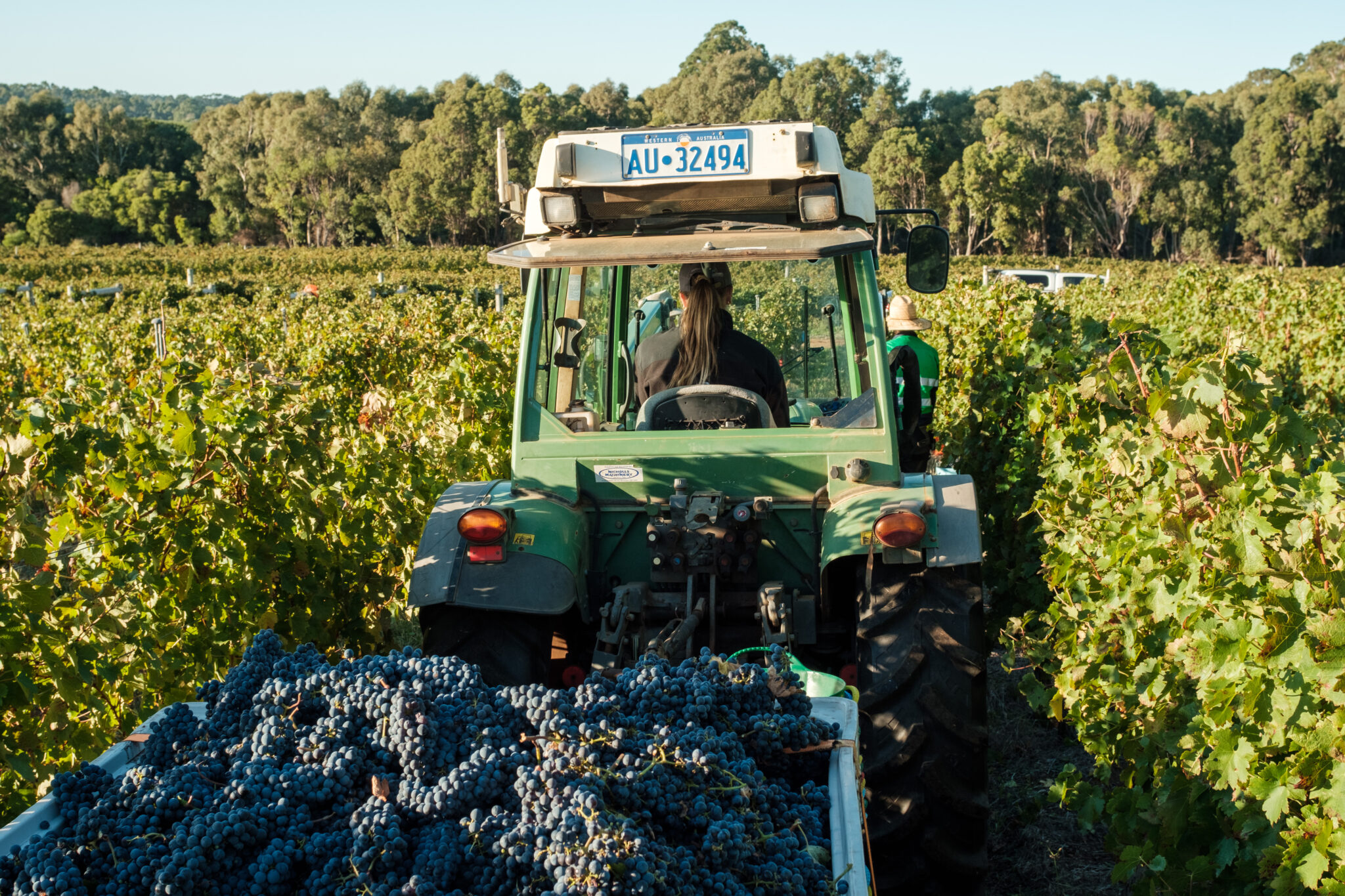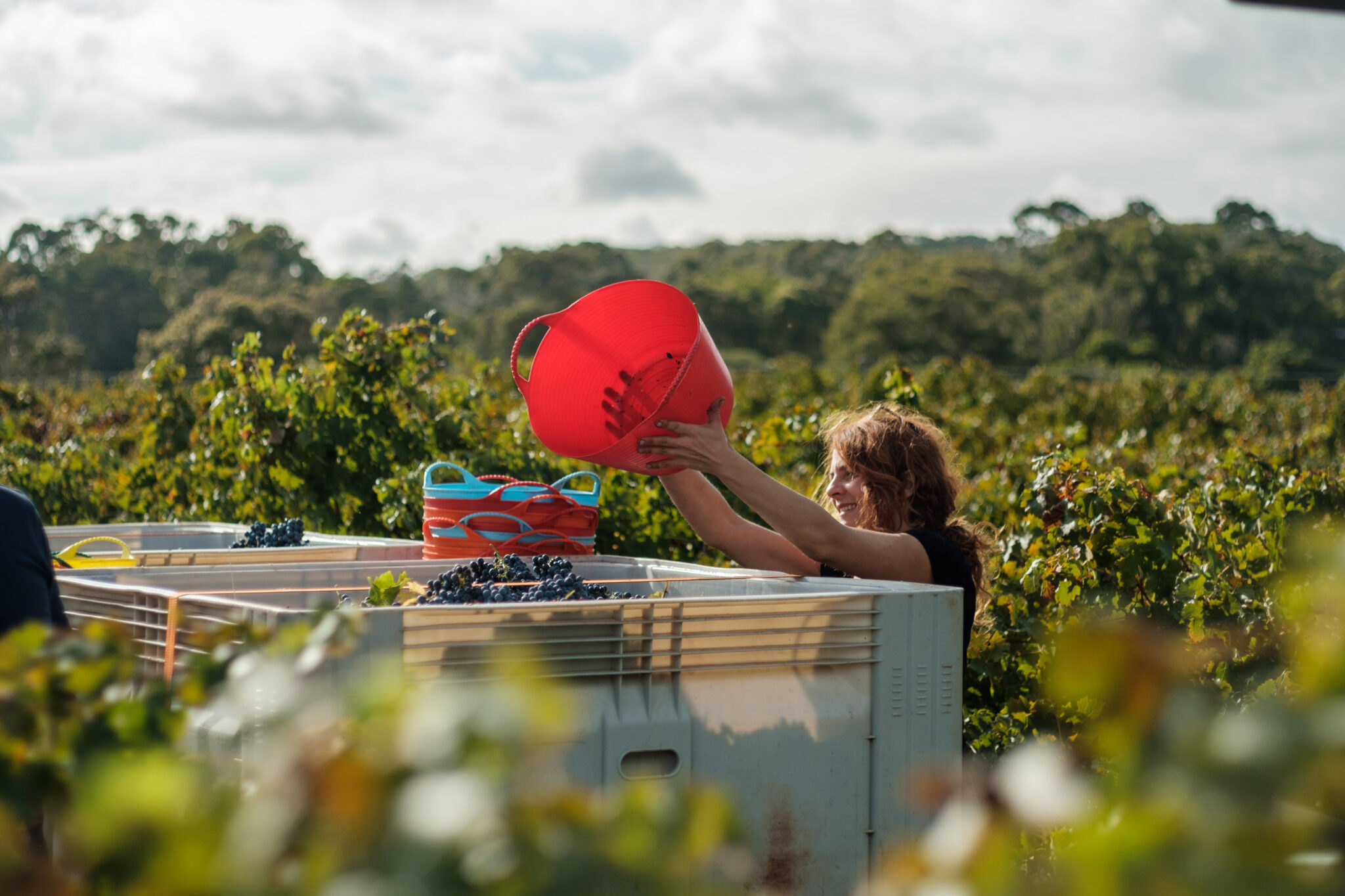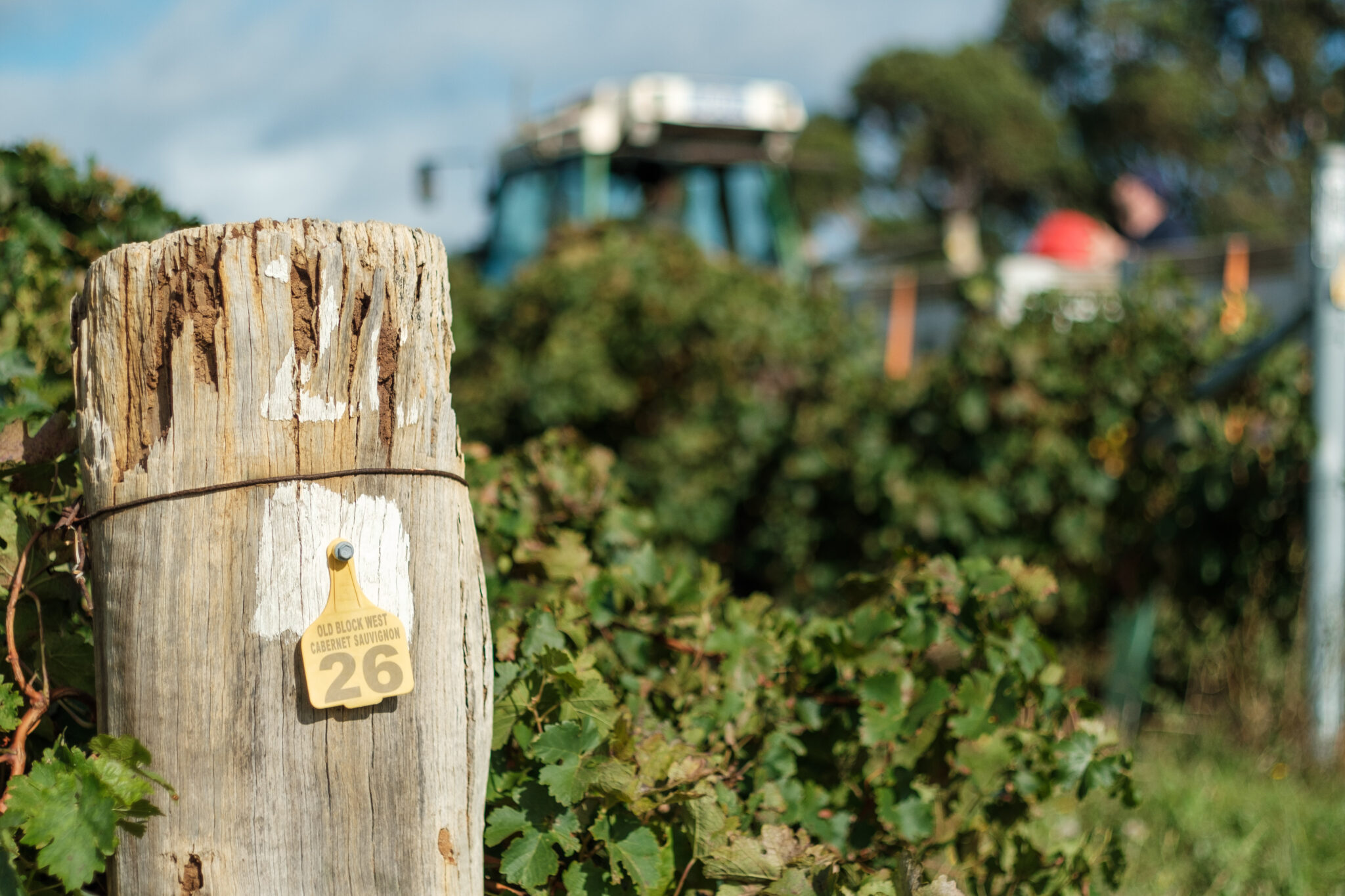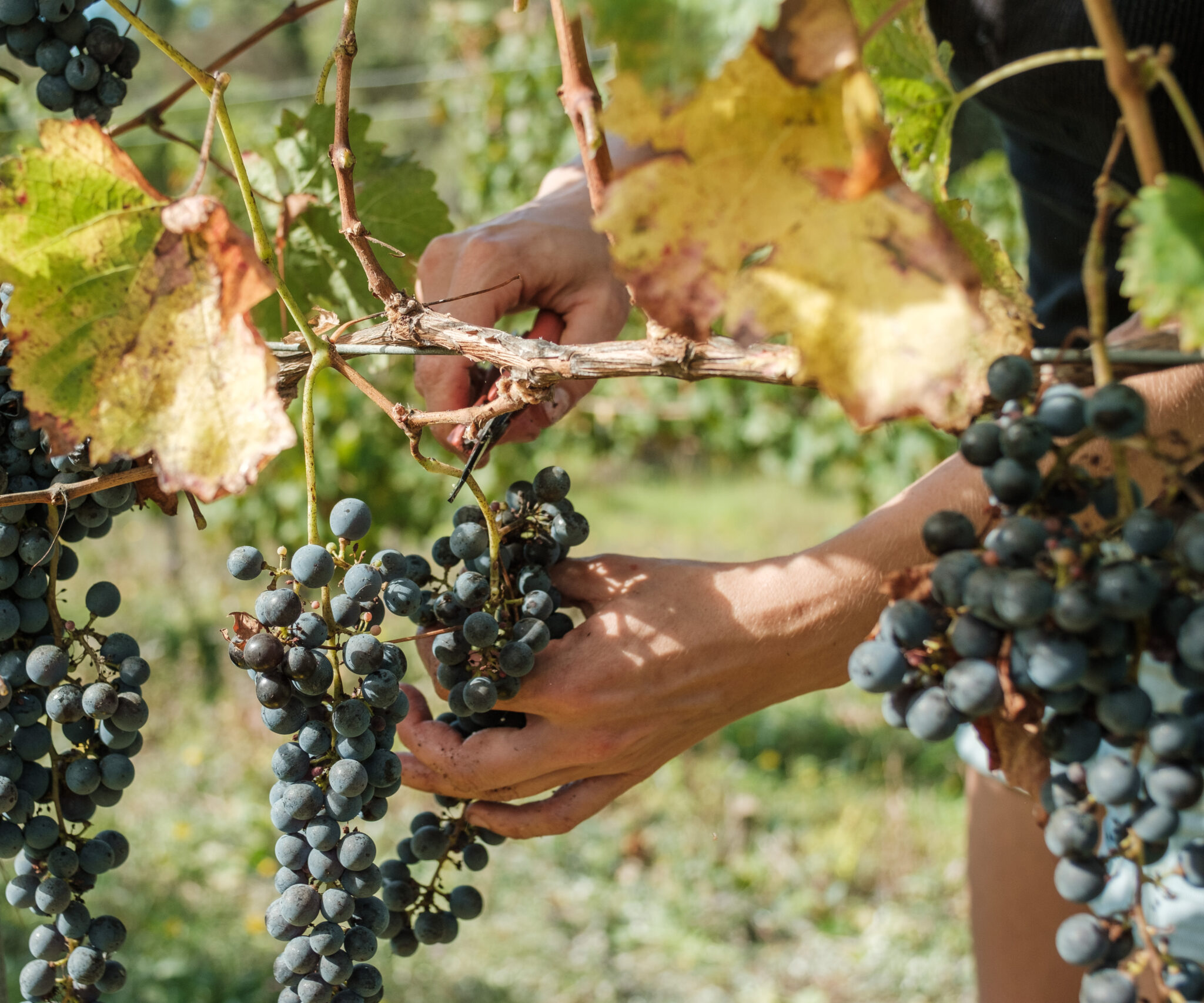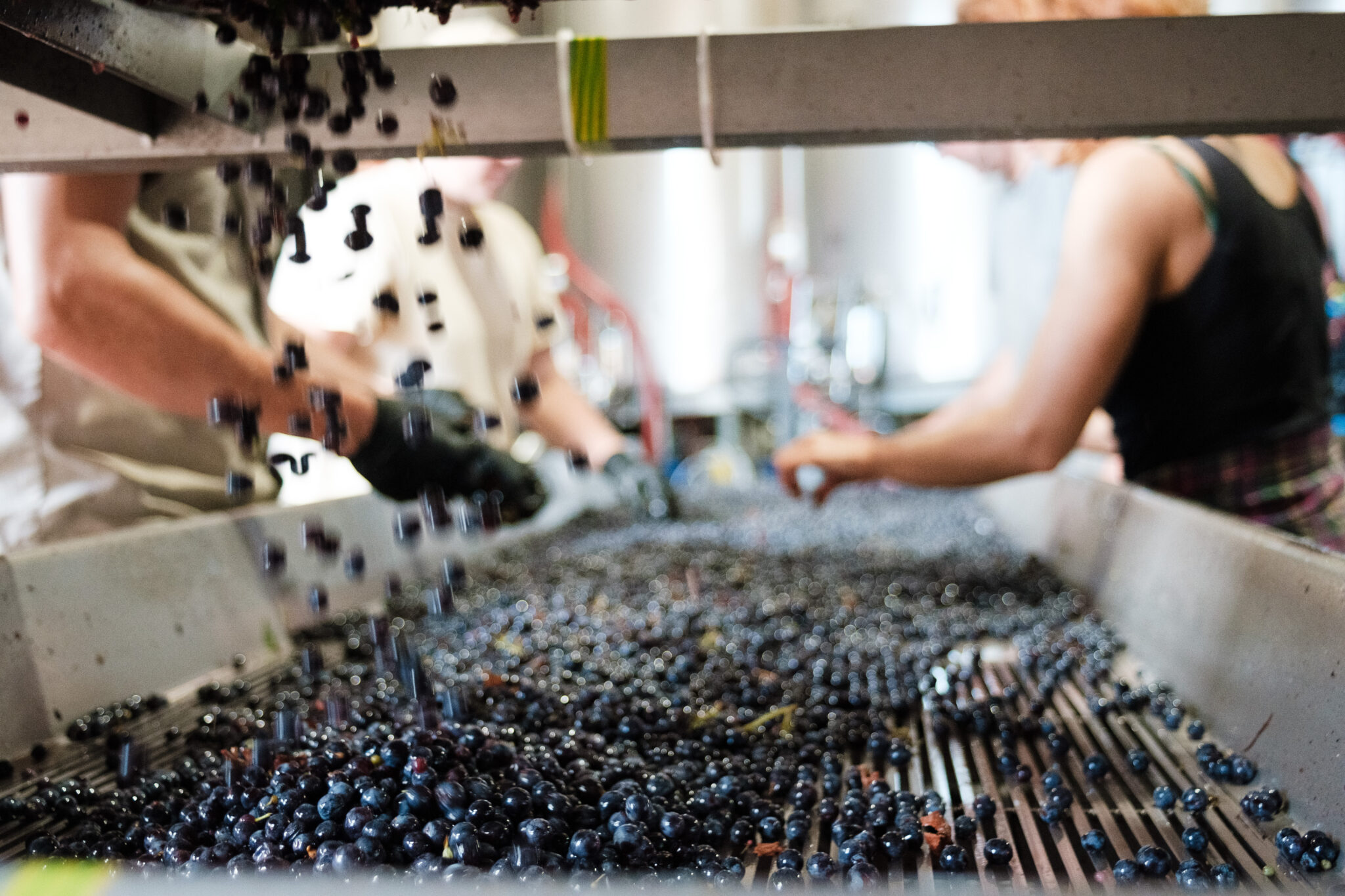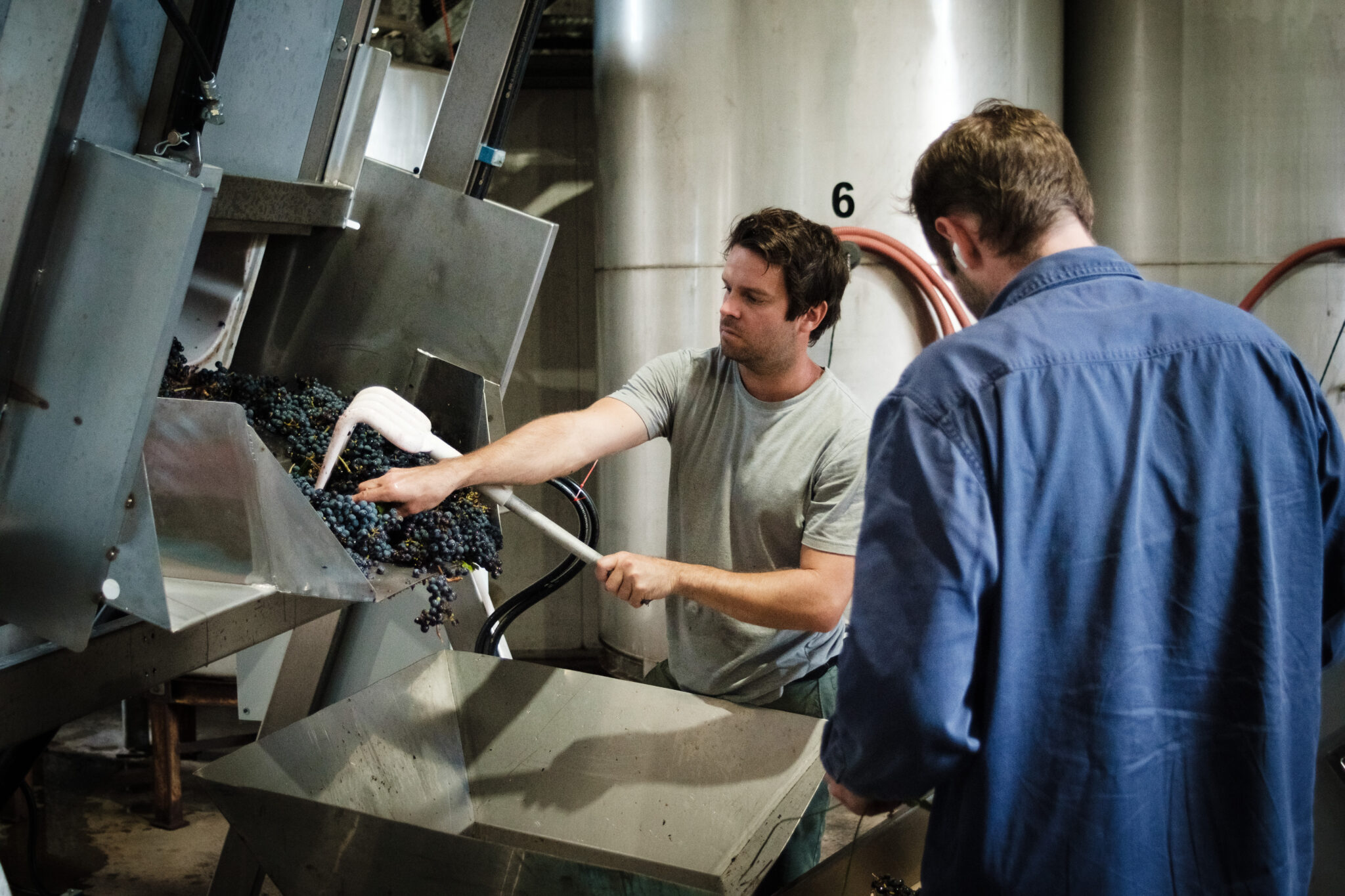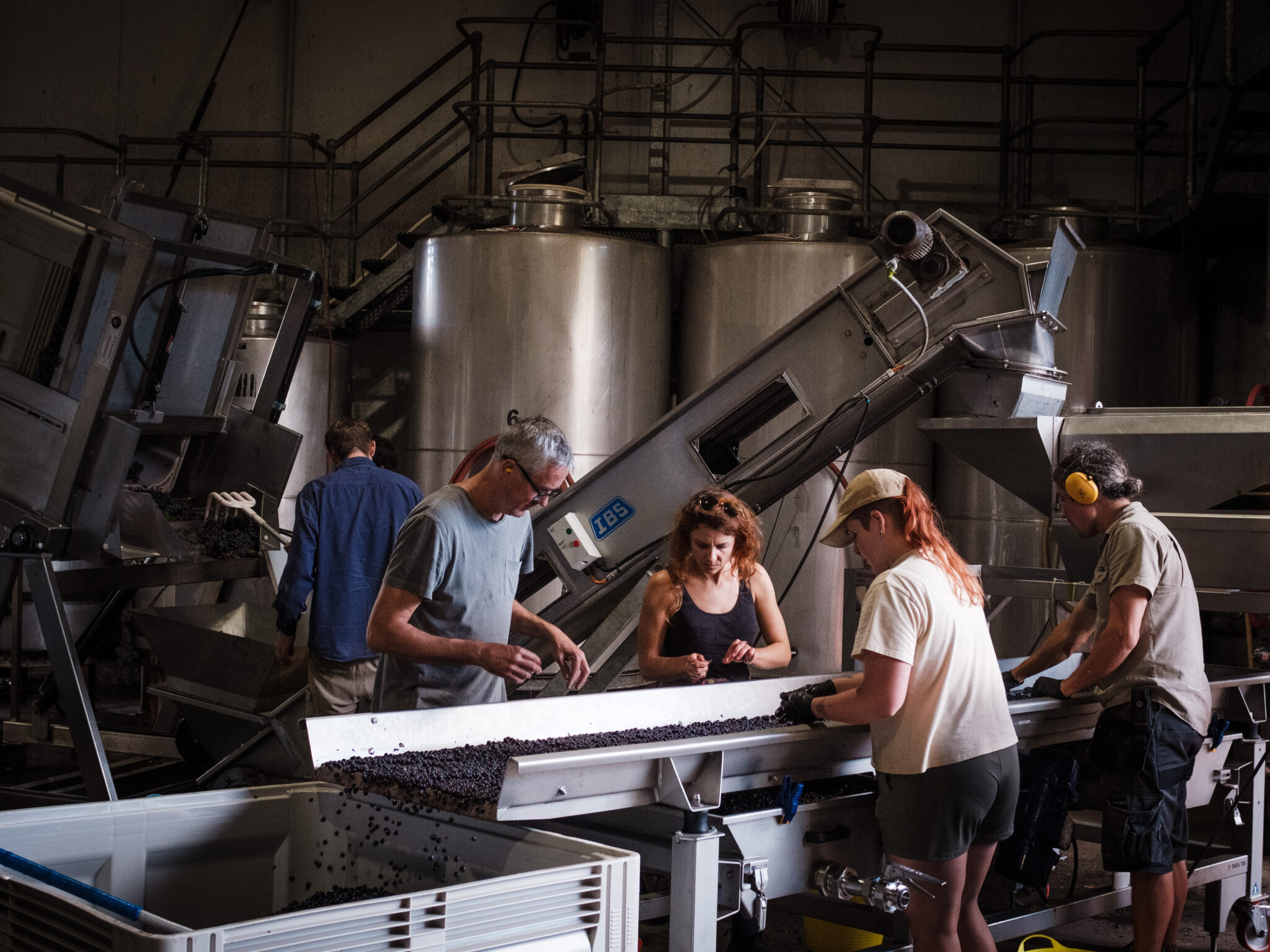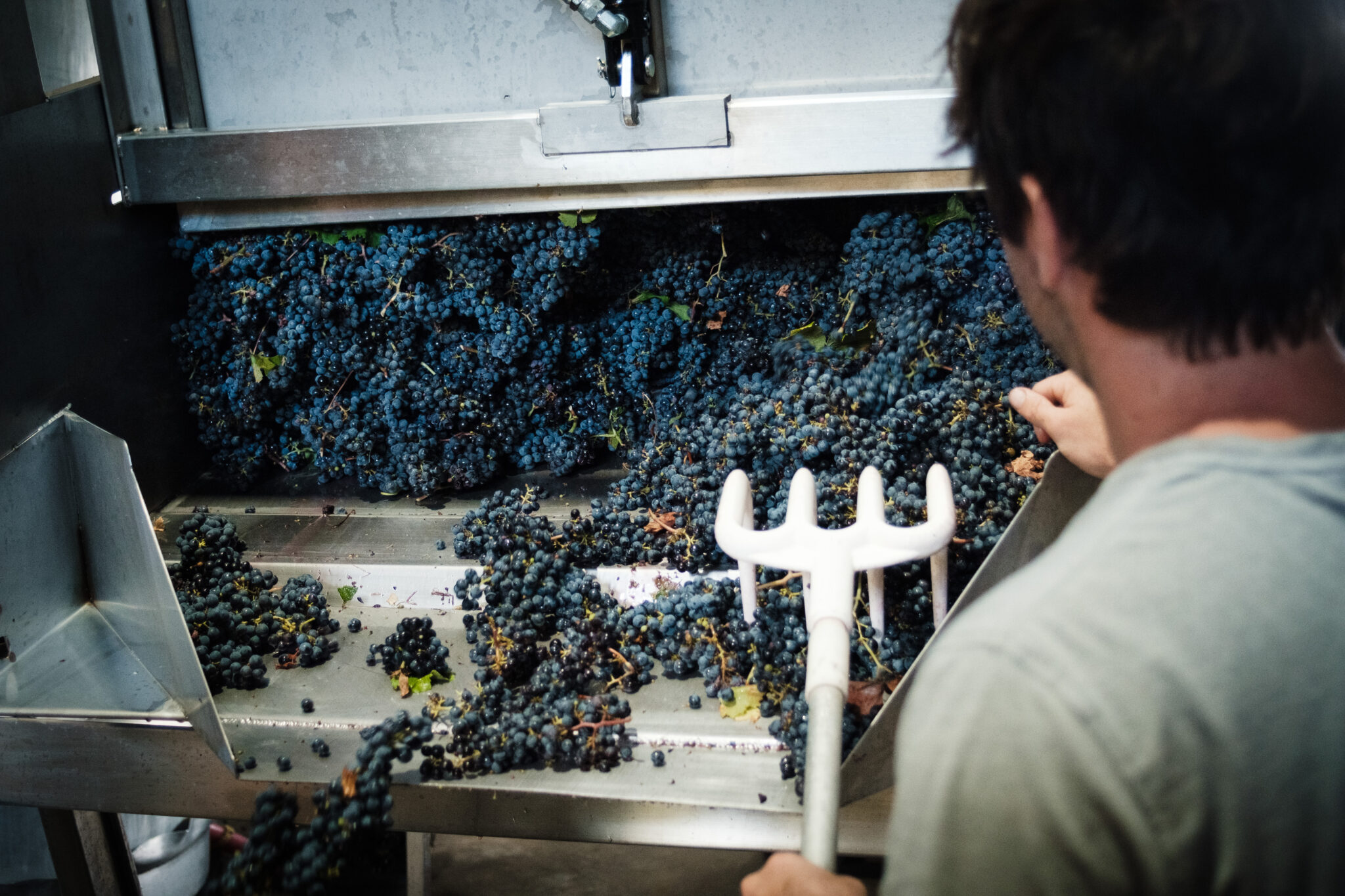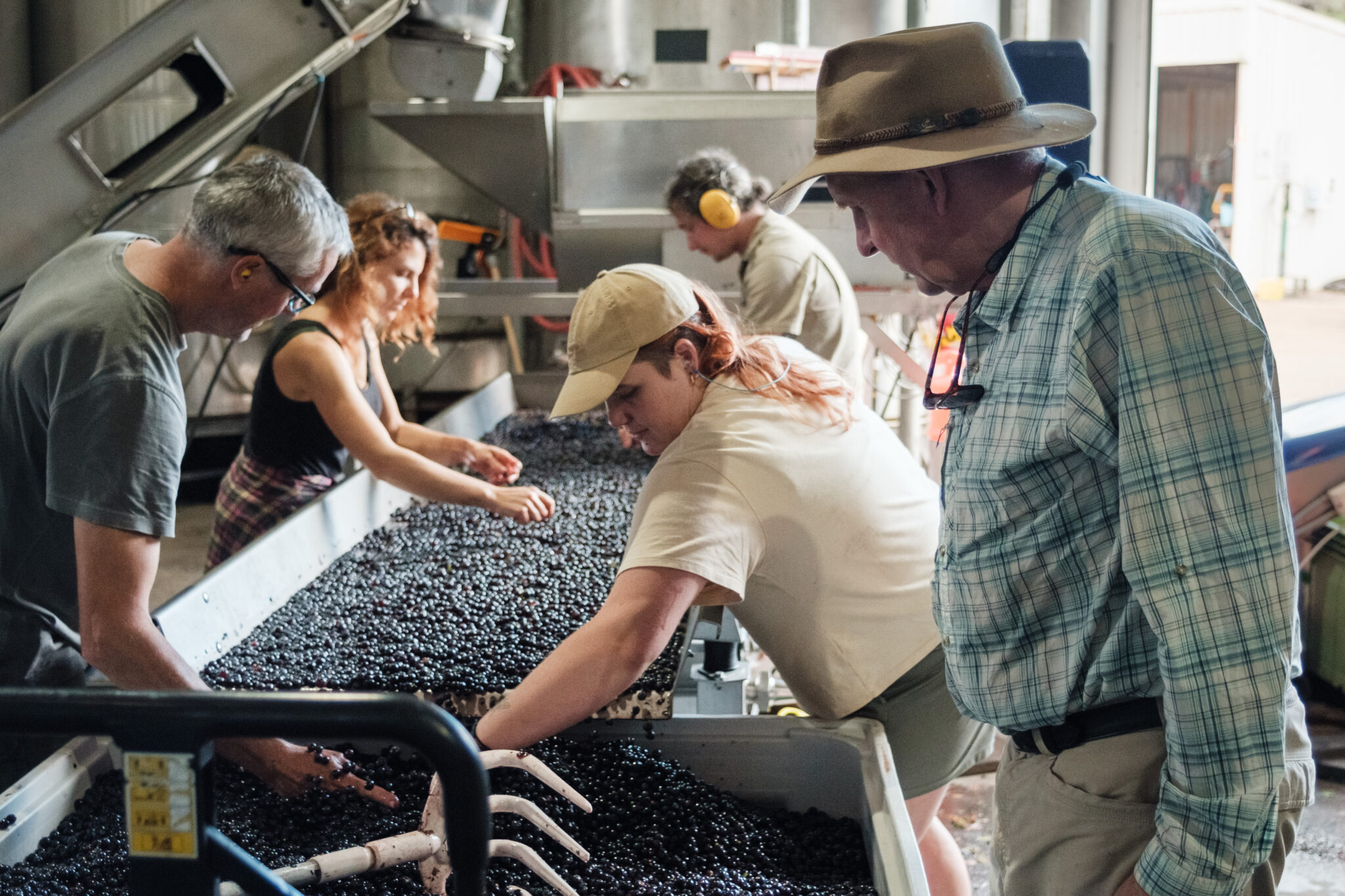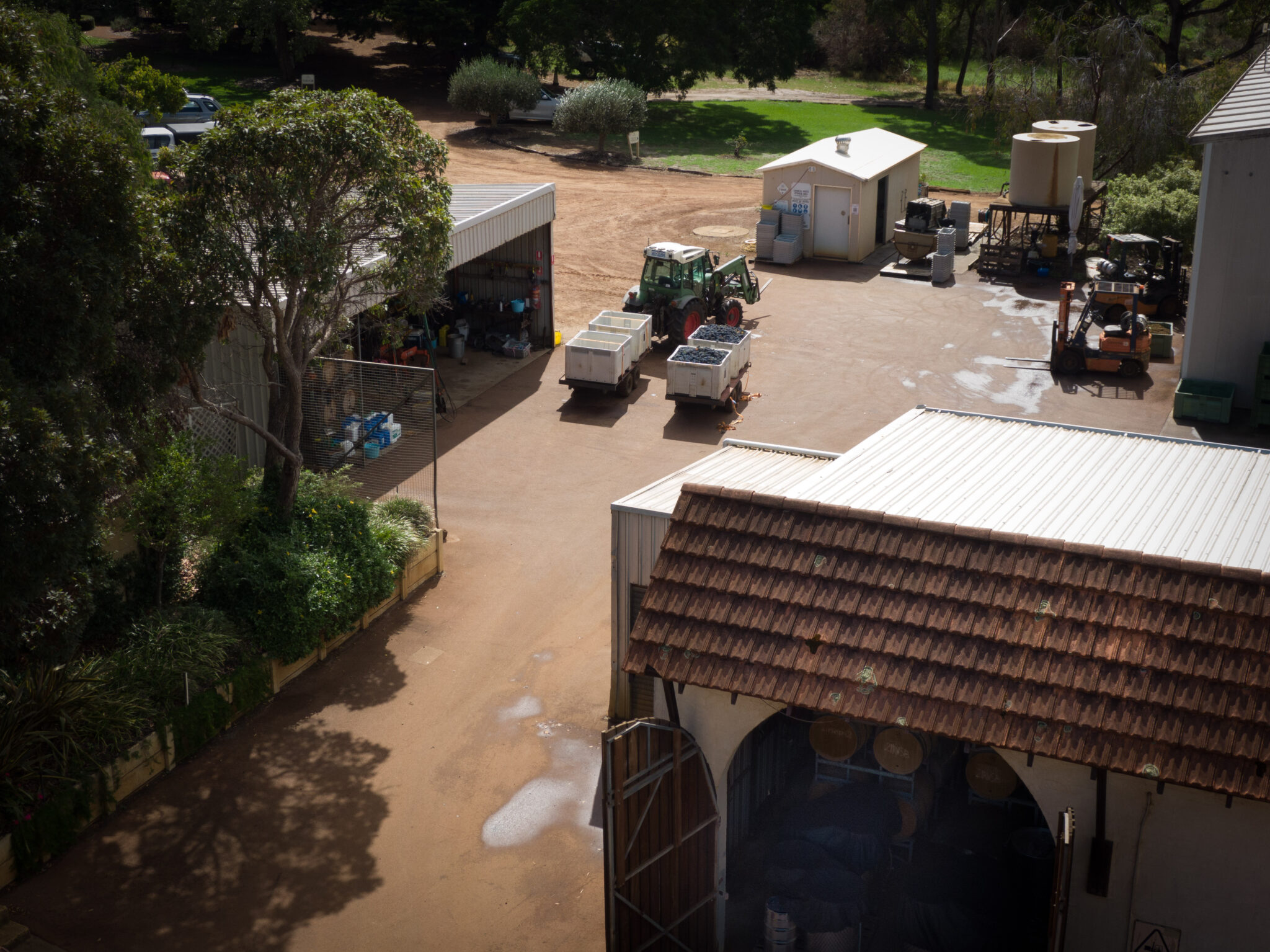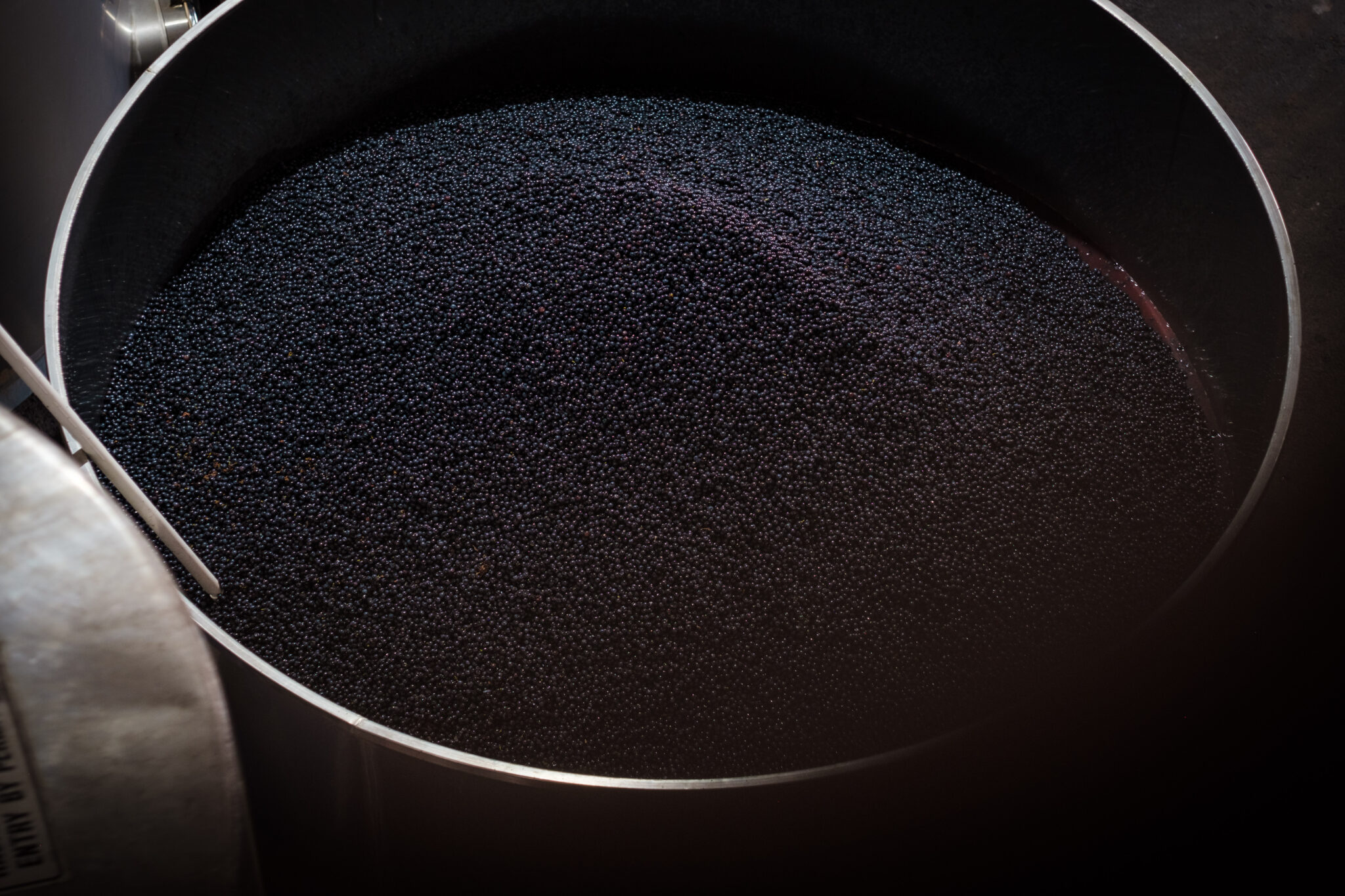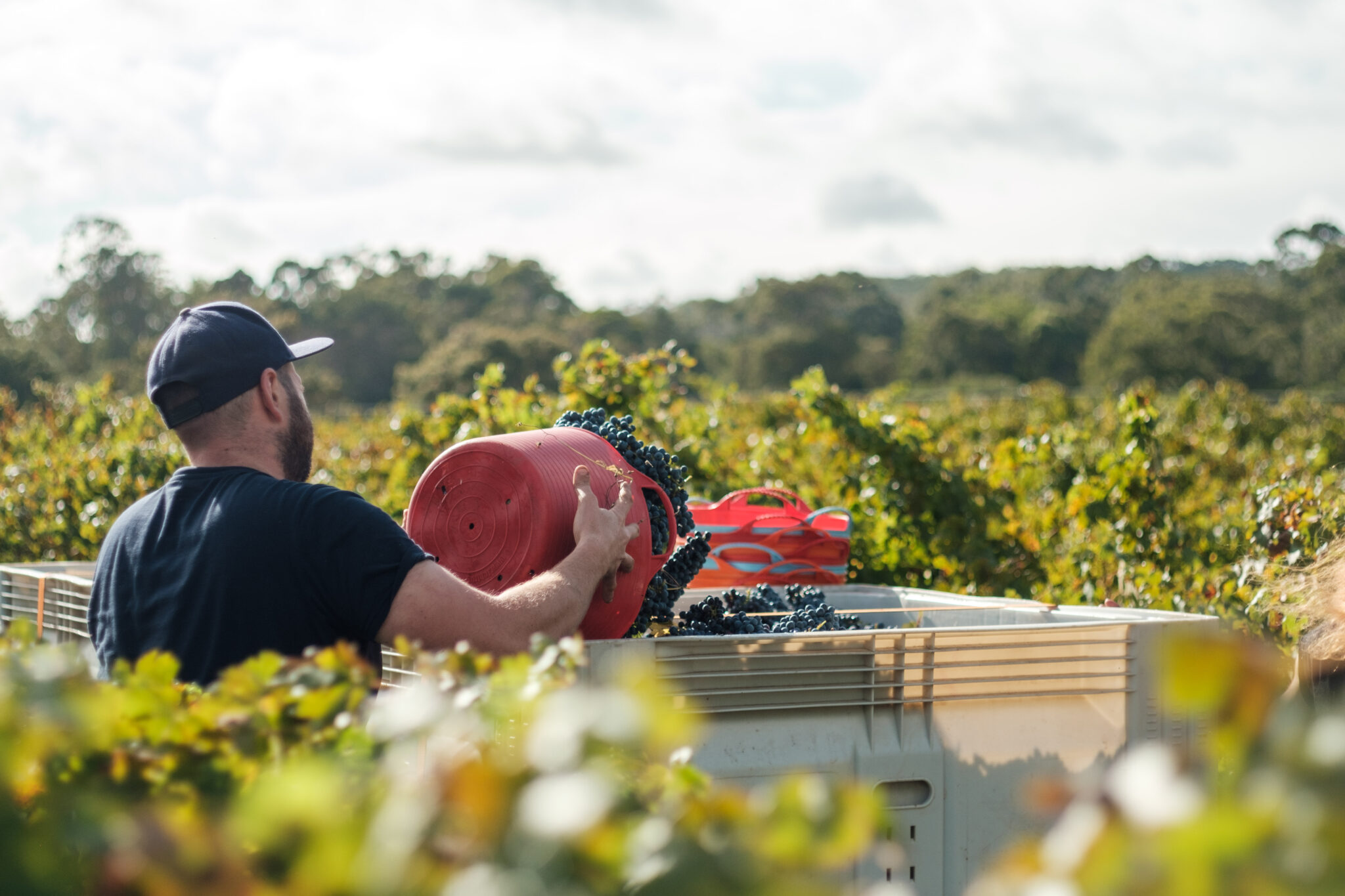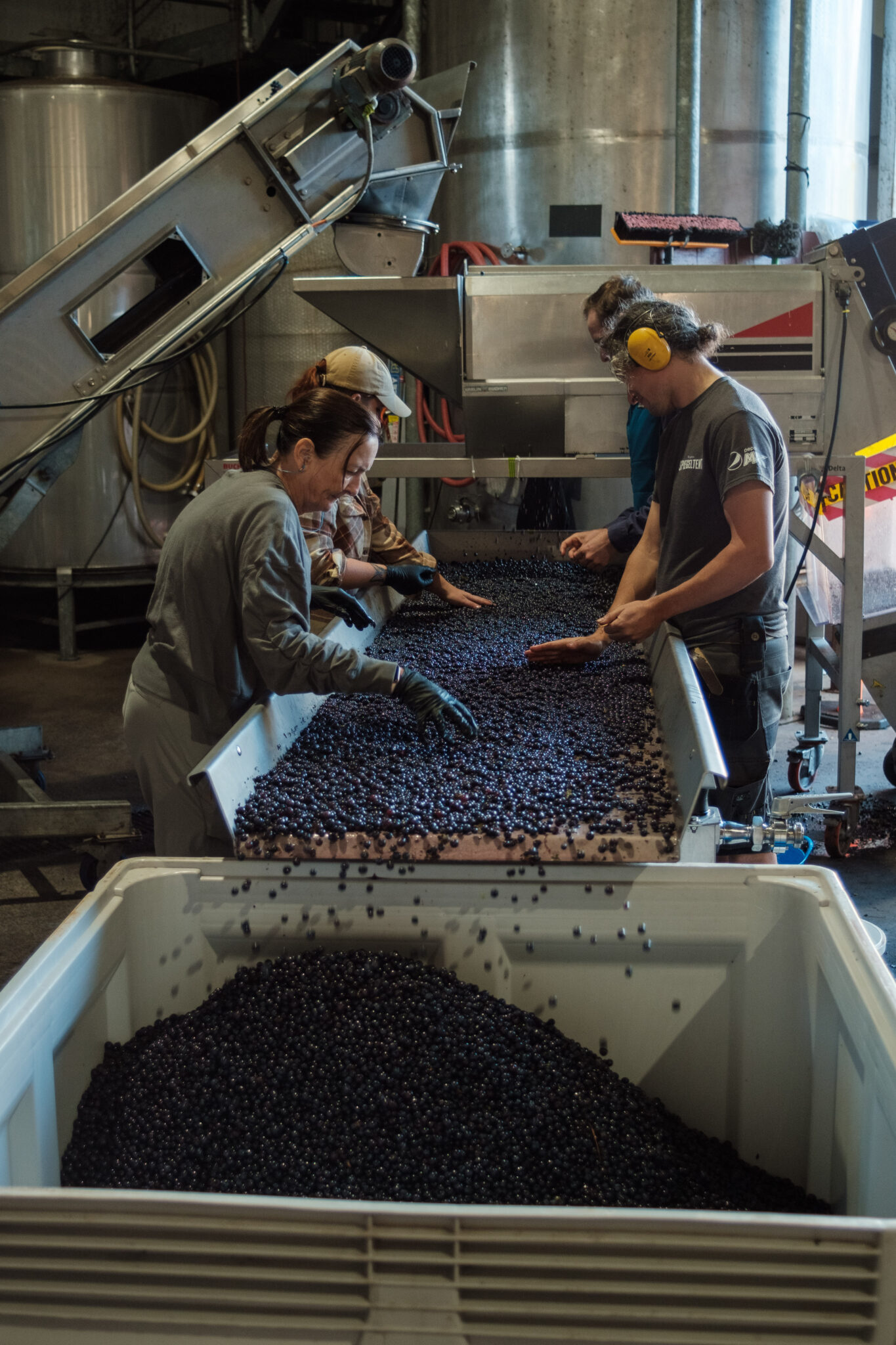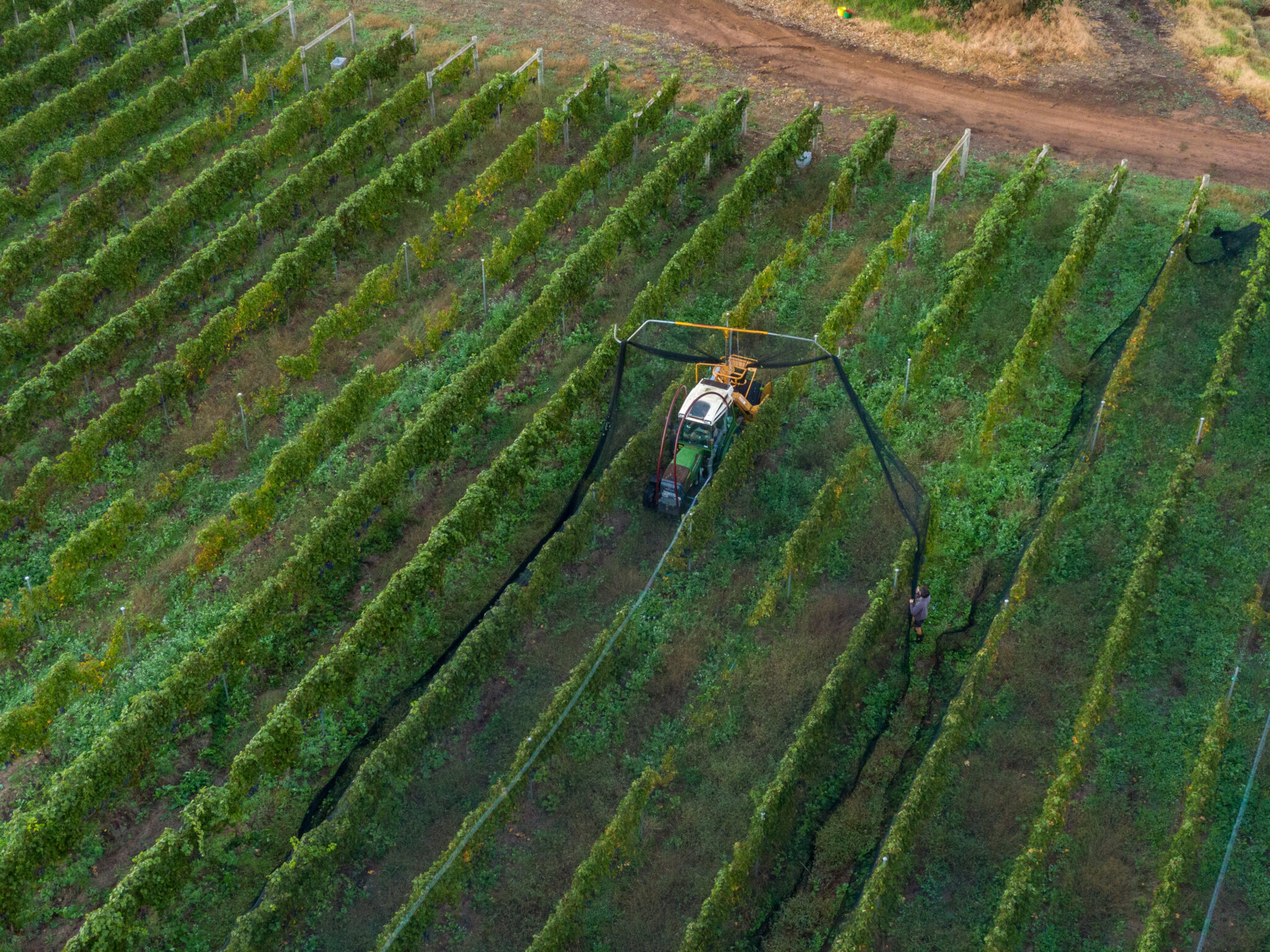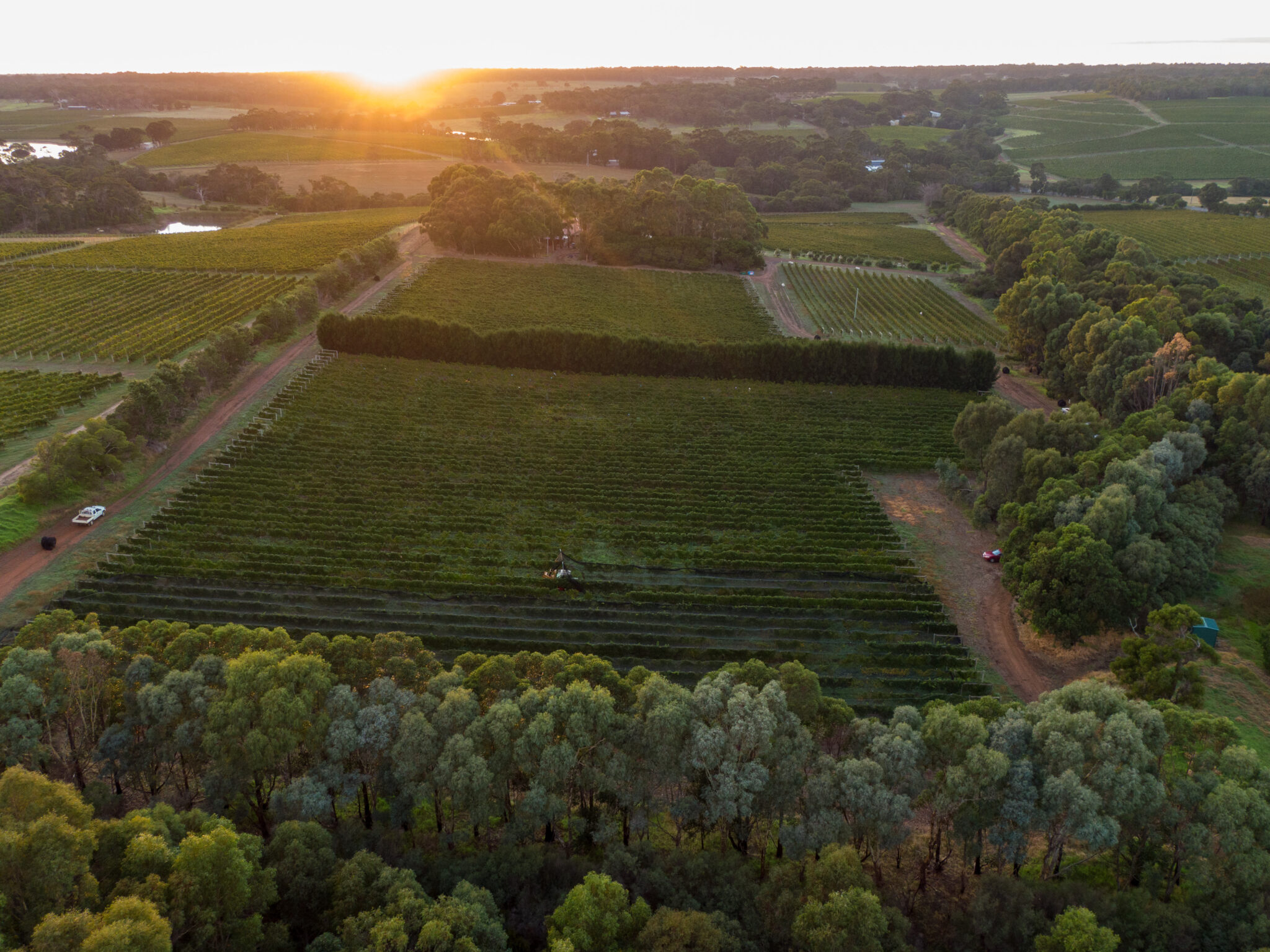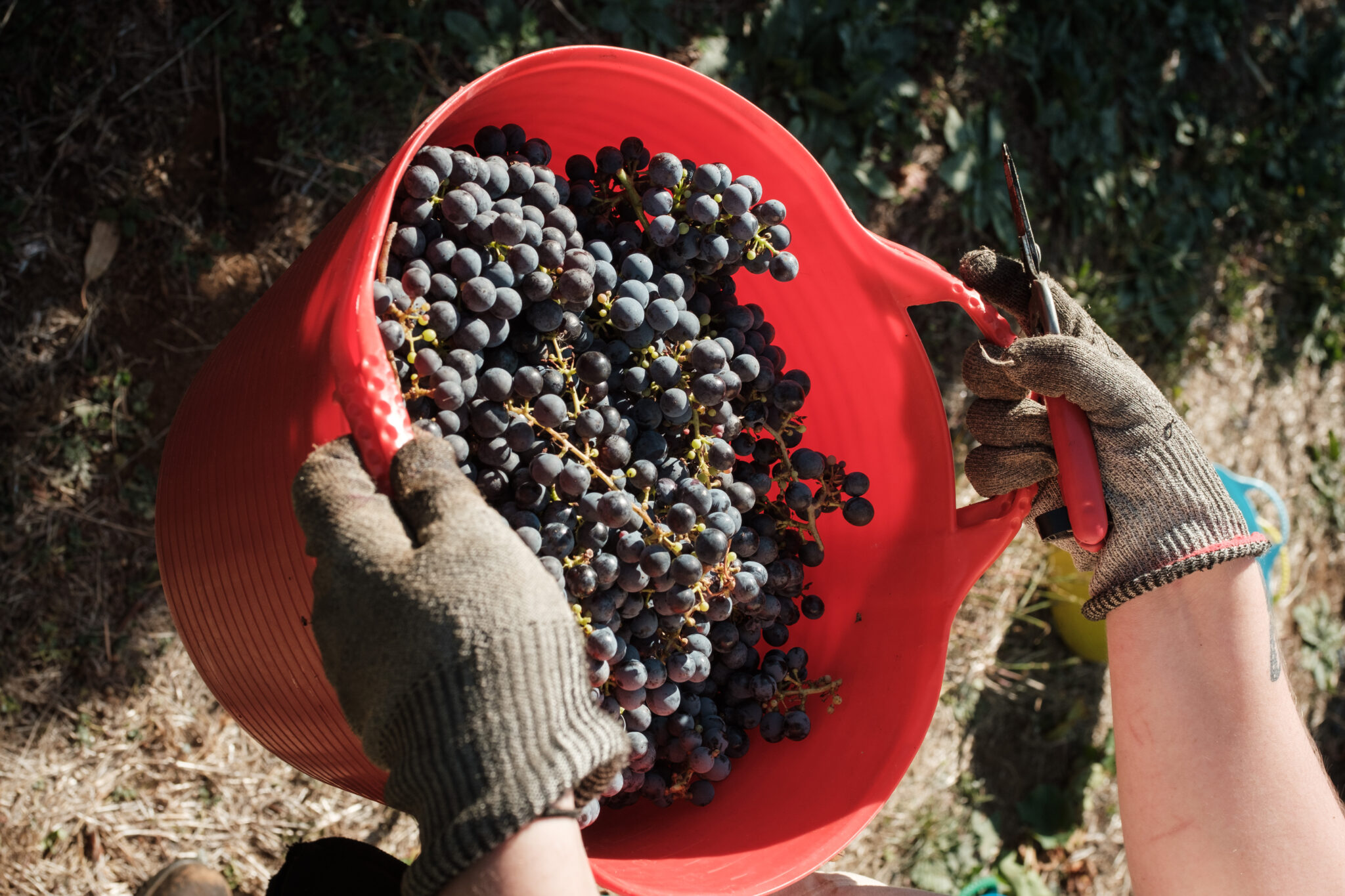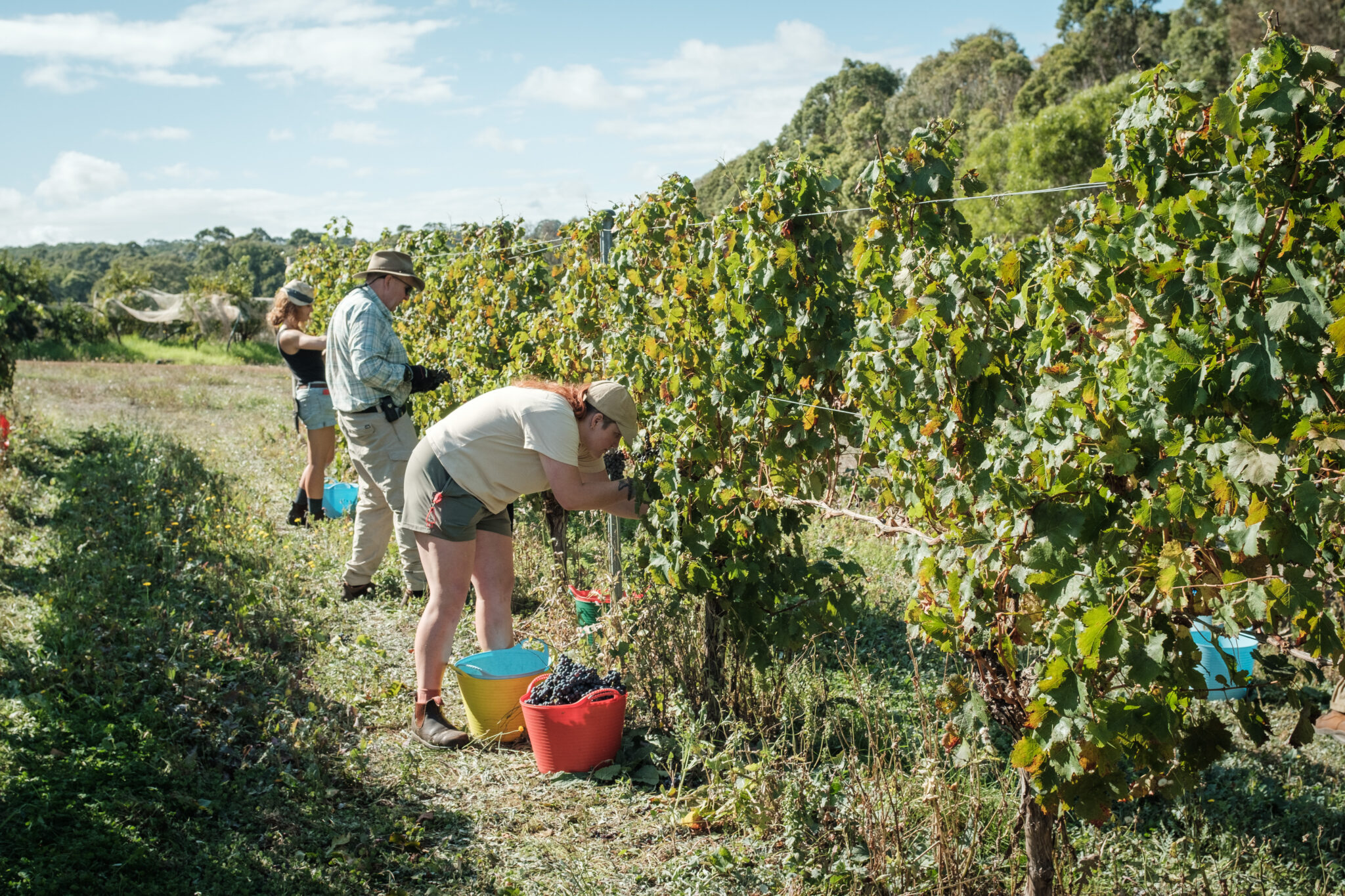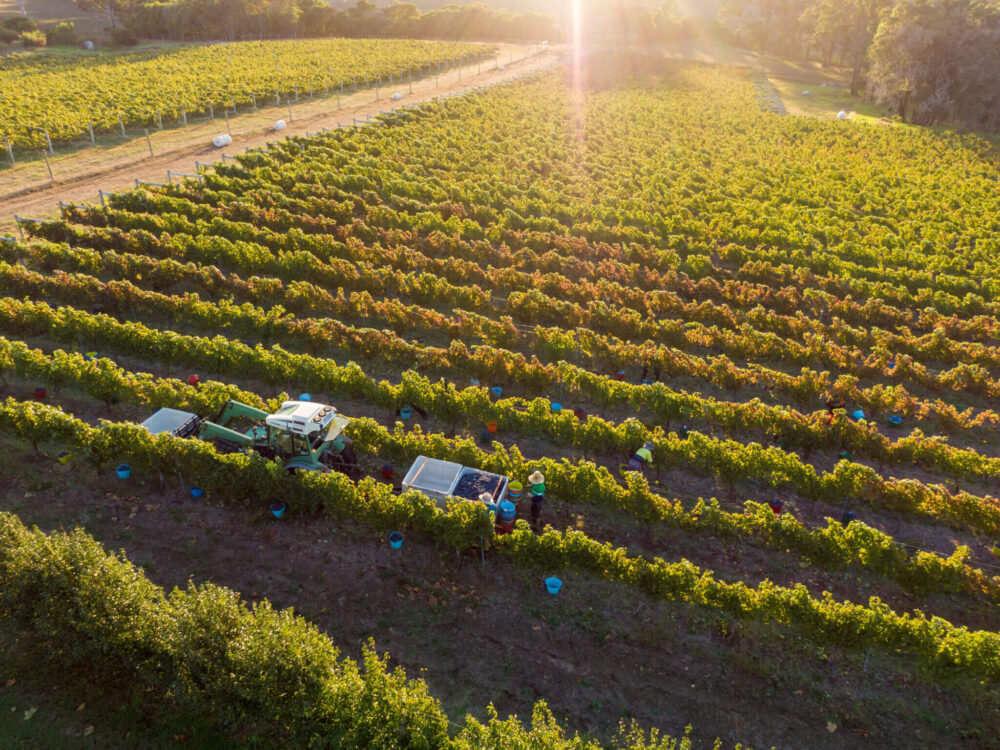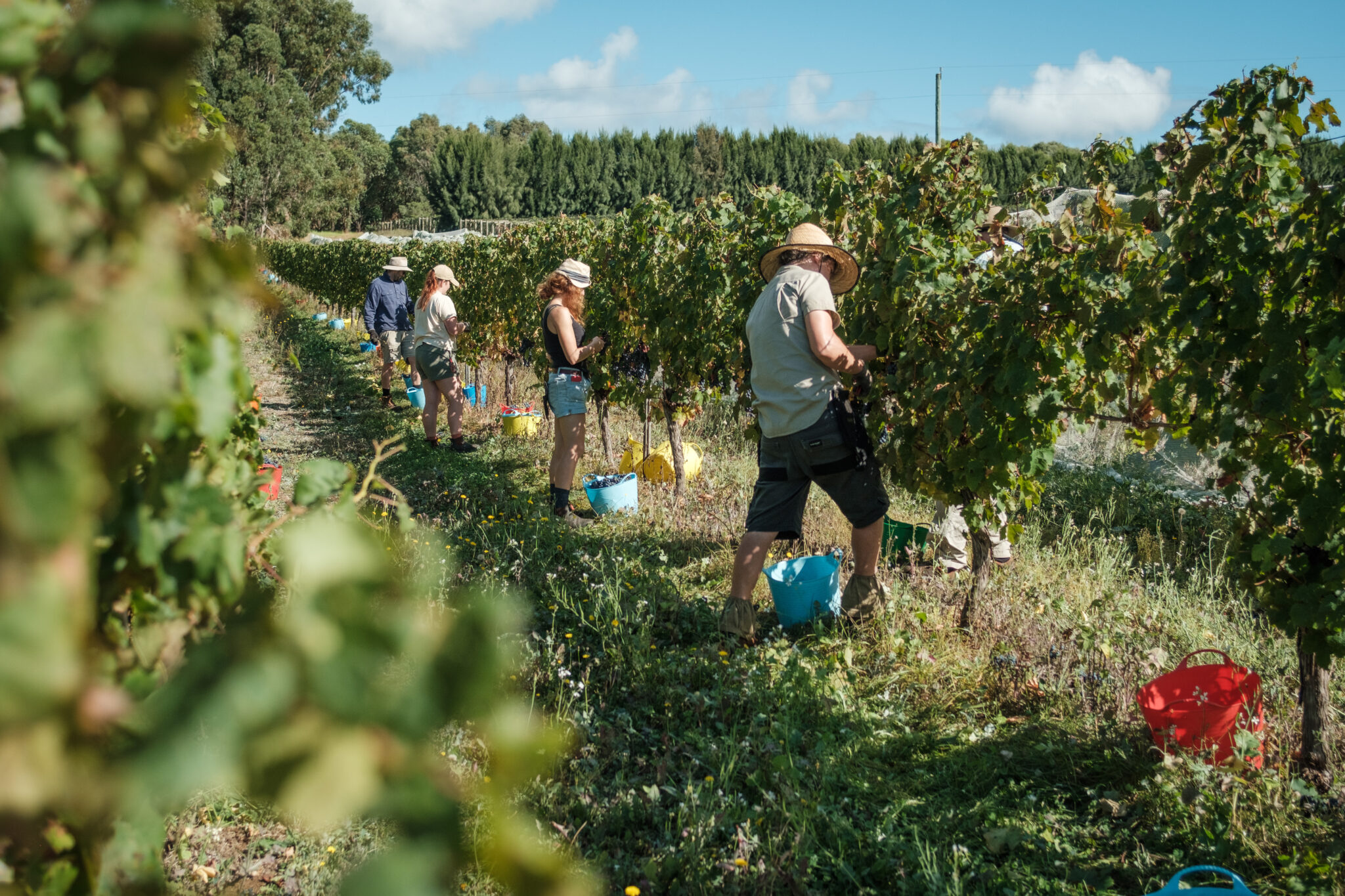Moss Wood 2021 Cabernet Sauvignon Newsletter
Autumn News Issue #121 March 2024
VINTAGE & PRODUCTION NOTES
We begin the story of Moss Wood 2021 Cabernet Sauvignon, another of our cooler vintages in the recent mould of 2017 and 2019. The first of the years in this style was 1975 and this has given us pause to reflect. Please forgive us while we indulge in a moment of whimsey. What were we doing nearly 50 years ago? Keith was a Matriculation student at Westminster School in Adelaide. Clare comments she was in Year 10 at North Lake High School in Perth, doing all the stupid things Year 10 girls do. Whatever that means? It was Moss Wood’s third vintage and the style the vineyard would make was not yet clear, but it turned out to be one of our most famous and more on that later.
There’s no doubt 2021 was a vintage when vineyard managers and winemakers earned their keep. Regular readers will know our stories of battling the elements and how we love to wax lyrical about the weather. As farmers first and foremost, it’s a fact of life and not something we complain about, especially since we’re very lucky to be working in a region like Margaret River, where Mother Nature is consistently kind to us. To highlight just how fortunate we are and at risk of tempting the fates, across Moss Wood’s 52 vintages to date, we have only ever declassified one Moss Wood Cabernet Sauvignon, the 1978 “Dry Red”, and that was the result of a winemaking problem, not the weather. Nevertheless, every now and then curve balls appear and so it was in 2021.
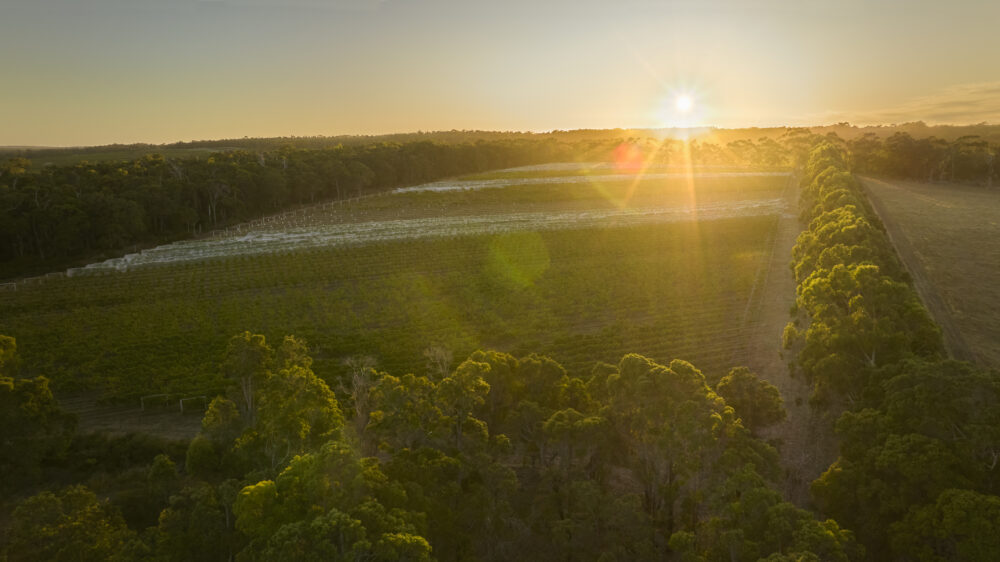
The first round of fun and games wasn’t a product of Mother Nature but rather the restrictions introduced in Western Australia to manage Covid. Our state’s borders were closed and it was extremely difficult to bring in people to help with the harvest. We were well covered for the picking because we have a team of Hazara refugees from Afghanistan, part of the community in the local town of Busselton, who have been working with us in the vineyard now for more than 10 years. However, we also need a vintage crew for the winery, typically made up of either students from Adelaide University or recently qualified winemakers from overseas. The 2-week Covid isolation period meant it was only the super-keen who made it in to WA. We gradually pieced together a good team, one of whom was Tom Hanson, recently graduated in Agricultural Science from the University of Western Australia, who proved very capable and is now a full-time member of the Moss Wood team. Being a local boy was a huge advantage because, of course, there was no isolation requirement, so we were fortunate to find him.
While we wrestled with these administrative issues, Mother Nature was in a relatively benign mood. Temperatures were mild but not too cold and flowering extended for 5 weeks, during which we received 12 days of rain, when a total of 89mm fell and only 6 days when the temperature dropped below 8°C. All quite conducive to good fruit set, although yields were down slightly. We had no damaging storms bringing strong wind or hail and no frost problems. It also meant the flowering dates for all the Cabernet varieties were just about spot on average.
Mild conditions prevailed through the summer, so ripening progressed slowly and it became clear we were going to have a late season. This was of no great concern because we’ve had significant experience with those sorts of years and made some very good wines, as noted above.
On 6th February, 2021, Mother Nature threw her first curve ball. A tropical low, not a full cyclone, given the fairly unimpressive moniker by the Bureau of Meteorology of “Tropical Low 12U”, moved down the WA coast. Between 6th and 10th February, it deposited 83mm of rain onto Moss Wood. This was early enough for the Cabernet varieties to cope easily because they were mostly still green.
Ah, thought Mother Nature, time for another challenge. So, on 3rd March, a winter-style cold front arrived and delivered 49mm of rain. Having had the earlier drink, the vines were accustomed to rain and coped fine with this. The other point to note is all the Cabernet varieties are native to the Bordeaux region of France, so have been selected over many years in seasons very similar to this one. They have thick skins and resist splitting and disease and have a justifiable robust reputation which is reflected in the consistency of quality of wine from that region.
Her final curve ball came in the second week of April, when remnants of tropical cyclone Seroja, which had crossed the WA coast at Kalbarri, brought a further 80mm. Prior to this, we were watching its progress very closely and made the call that we needed to start picking Cabernet Sauvignon ahead of rain’s arrival in Margaret River. We commenced on 6th April and all but the last 2 small parcels were off by the 9th April. The remainder was tidied up by 15th April, as soon as the rain was finished. In the end, the decision proved to be the right one.
It’s worth taking stock of what all this discussion means. The biggest issue with rain is not the threat of fungal disease, as noted above, but rather the low temperatures that accompany it and how this slows ripening. We can point to some useful statistics to highlight this point. The average growing season temperature for Moss Wood Cabernet Sauvignon is 20.1°C but in 2021 it was 18.8°C. When differences of 0.2°C can make a perceivable difference in wine style, it shows just what a cool season we were having. However, there is another number that is even more significant, the 134 days that lapsed between flowering and harvest, which is 13 days longer than average. What this means is despite the mild temperatures, Cabernet Sauvignon had sufficient time on the vines to achieve full ripeness. This is what separates it from years like 2002 and 2006. Both were warmer than 2021, with average temperatures of 19.6°C and 19.4°C, respectively. Their harvest dates of 2nd April and 19th April were not dissimilar but the crucial difference was the days from flowering to harvest, with 2002 having only 111 days and 2006 having 125 days. In 2021, we had sufficient time for Cabernet to achieve full ripeness, courtesy of earlier flowering.
How does this nerdy stuff manifest itself in the finished wine? To make this clear, we return to 1975.
Moss Wood has two co-founders, Sandra and Bill Pannell and so much of what they did remains in our DNA. Neither were trained in winemaking but driven by sheer enthusiasm and their combined good instincts, plus a strong desire to learn, they were ultimately incredibly successful. Like all good teams, their roles were slightly different, and both brought their unique skills.
Sandra was a pioneer in an era when hard-working farmers wives were given little or no recognition. A doting mother of 4 children, all of whom can be described as “spirited” characters, she also made time and energy to tackle the relentless hands-on work and long days of viticulture and winemaking and to run a small wine business. Bill was a local GP, a scientist and technician who thrived on the physical challenges. Phew! There wasn’t much spare time and we can only admire their dedication.
Sandra has impeccable good taste and is an oracle of fashion, who adored the style and elegance of Audrey Hepburn. An extension of this was she brought an intuitive interpretation to wine tasting and which manifested itself in her descriptions of our original, famous “twin” wines, the 1975 and 1976 Moss Wood Cabernet Sauvignons. The former, with its cool year classical complexity, elegance and restraint was, of course, an Audrey Hepburn. The latter, was a warm, ripe year, more “in your face” and, for Sandra, a Dolly Parton wine. This is not to belittle the remarkable career of the incredibly talented Dolly but quite simply, she had captured the essence of their differences. In comparing the ’75 and ’76 to two different women, Sandra was talking about their style and her comments captured their work as both were stars, in their own right.
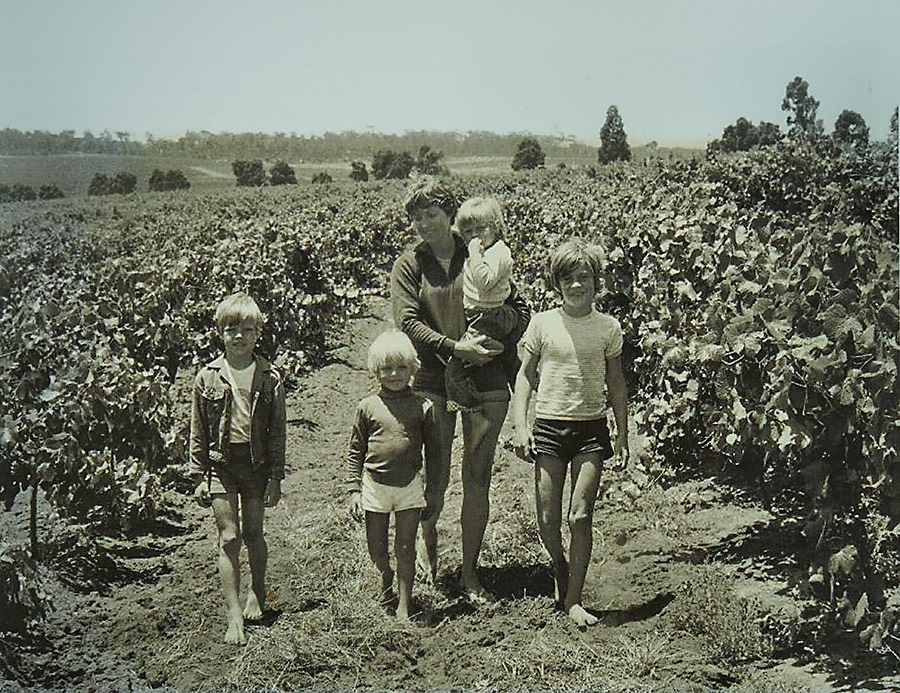
From Lt to Rt, Daniel, Nicholas, Sandra, with Emma in her arms, and Stephen Pannell, circa 1975, in the Moss Wood Pinot Noir vineyard.
Another way to compare the wines is to use a musical metaphor.
It could be said the wines we make in cooler vintages align best with classical music. Some may find this a bit pompous, comparing our mere wine with the greatest pieces. However, we certainly don’t claim to be making something anywhere near the majesty of Beethoven’s Piano Sonata Number 14, in C-sharp minor, more famously known as the Moonlight Sonatas. Nevertheless, across its 3 movements, the layers and melodies are many and this is something we aspire to in wine.
On the other hand, the warmer vintages have powerful, ripe fruit notes, typically simpler but yummier and easier to enjoy, more in the role of popular music. Just which songs we might use for comparison has caused debate among the Moss Wood team. Would it be too much to compare them to a classic like The Eagles singing “Take it Easy?” Or, in really ripe years, maybe Queen belting out “We Will Rock You?” There may be some who feel that’s more appropriate for Barossa shiraz?
Returning to the point, from a winemaking perspective, we strive to make the Moonlight Sonatas. The complexity and depth in wines like the 1975 are what we love and bring the highest praise from the sternest critics but they are the product of cooler years and with those seasons come risks. The mild temperatures responsible for the wide range of fruit aromas that deliver this complexity mean we live on the edge while the grapes ripen slowly and the waiting for the harvest drags on. This is not for the faint-hearted but when Mother Nature smiles on us, it’s always worth the effort.
As farmers, we are unlikely to say this often but we were also assisted in 2021 by lower yields. The vines had a little bit less work to do to get to full ripeness. Cabernet Sauvignon and Cabernet Franc were down slightly, about 15%, although Petit Verdot had a completely nervy turn and was down 80%. It’s a good thing we don’t rely on it. In fact, Bordeaux legend, Peter Sichel, once commented that Petit Verdot can be a bit like a bank manager – never there when you need them. Apologies to any folks in that profession.
Having finally reached required ripeness, everything proceeded according to our Moss Wood recipe. All the fruit was hand-picked and delivered to the winery, where it was sorted, destemmed and placed into small, open fermenters for fermentation. Skin contact time varied a little between batches, with pressing done after 13 to 16 days. Malolactic fermentation was carried out in stainless steel and once completed all batches were racked to wood. The barrels were 228 litre French oak and 16% were new.
The various batches were blended for the first time in December 2022, and the finished wine was returned to barrel for the last period of aging.
The final racking took place at the beginning of October 2023 and fining trials were conducted on the finished wine. None improved the tannin balance and so it remains unfined. It was then sterile filtered and bottled on 30th October, 2023.
Moss Wood 2021 Cabernet Sauvignon
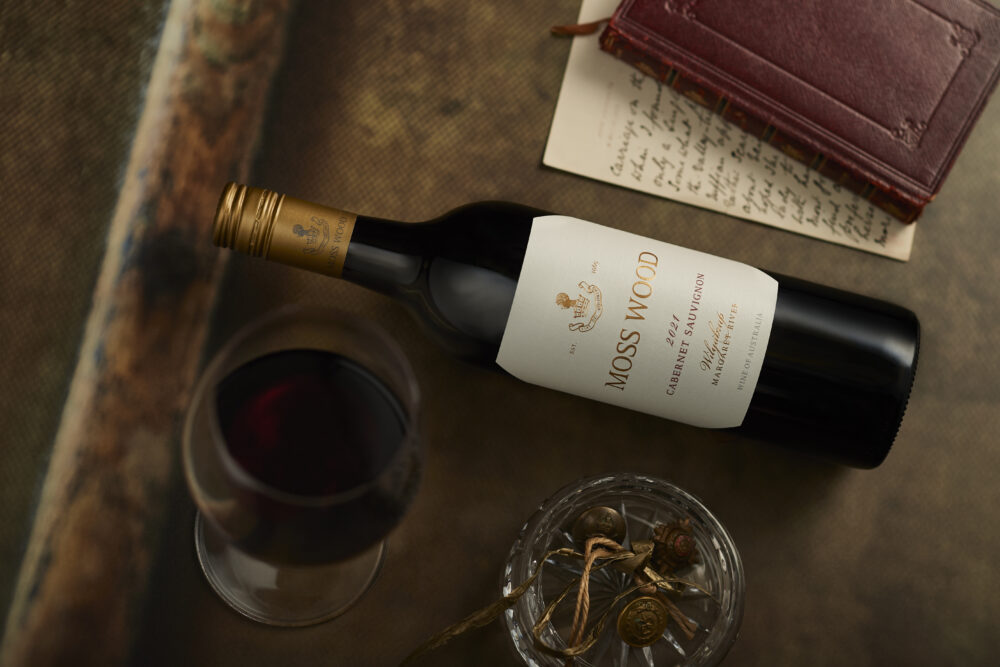
Tasting Notes
Colour and Condition:
Deep brick red hue; bright condition.
Nose:
An intense array of primary fruit notes, including blueberries, raspberries, red currant, mulberry, plum and musk, as well as a touch of nutmeg, cinnamon and clove spices. Cabernet Sauvignon’s classic floral note of violets adds volume. The complexities in the background include cedar, tobacco and tar, the “cigar box” combination, plus some light toasty oak.
Palate:
The theme of the red and dark fruits continues, with black currant, cherry, blueberry, mulberry and dark jube flavours filling the mouth. They sit over a medium to full body, with bright acidity and soft, well integrated, svelte, almost chocolate-like, tannin. The wine is long and finishes with cedar and toasty oak, with perhaps a touch of star anise.
CELLARING
Our recommendations for cellaring the Moss Wood 2021 Cabernet Sauvignon are very simple and in the classic tradition of this wine. Given the nature of the season, it is very appealing now, with lifted fruit notes and soft round tannins and can certainly be enjoyed as a youngster. However, it will repay long term cellaring and we suggest a minimum of 10 years, to allow it to develop some bottle bouquet. For those who wish to see it at its peak, we recommend aging for at least 20 years.
| Wine Facts | |
|---|---|
| Median Harvest Date | Cabernet Sauvignon 11/04/2021 Cabernet Franc 06/04/2021 Petit Verdot 31/03/2021 |
| Mean Harvest Ripeness | Cabernet Sauvignon 13.0° Be Cabernet Franc 13.2° Be Petit Verdot 14.0° Be |
| Yield | Cabernet Sauvignon 6.36 t/ha Cabernet Franc 4.84 t/ha Petit Verdot 0.99 t/ha |
| Ripening Time from Flowering to Harvest | Cabernet Sauvignon 134 days Cabernet Franc 134 days Petit Verdot 132 days |
| Bottled | 30th October, 2023 |
| Blend | 95% Cabernet Sauvignon 4% Cabernet Franc 1% Petit Verdot |
| Alcohol | 14.0% |
2024 Growing Season
Having discussed, in detail, the long, cool season of 2021, we can report we’ve had the polar opposite in 2024.
Warm days during October and November brought on an early flowering, with all varieties going through 2 weeks ahead of average. Since then, warm, dry conditions have continued, condensing the season and bringing harvest dates forward by a further week. Pinot Noir was our first pick, with the D4V2 “Droopy” clone, coming off on 29th January, slightly more than 3 weeks ahead of the long- term average of 23rd February. It makes this our second earliest vintage ever, with the record sitting with 2007, when we started on 28th January. In the end, everything was picked and in the winery by 10th March.
With the drier conditions have come lower yields and crops have been down significantly. Pinot Noir has been the star of the year, down only 10% but after that it’s something of a tale of woe. Cabernet Sauvignon and Chardonnay are down around 30% and Semillon by 50%.
On the positive side, quality is excellent. All the different varieties have very pretty aromatics and the reds have beautifully ripe and balanced tannins. Looking back over our history of vintages, 2024 shares much in common with 1995. We may not have made much but what’s in the tanks is very pleasing indeed.
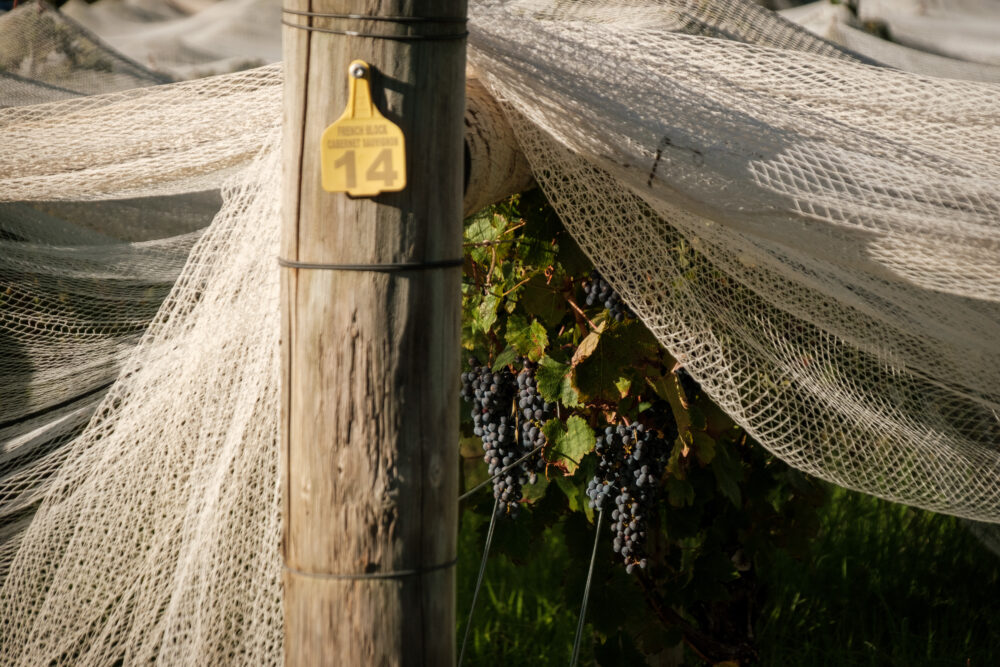
Vintage Crew
Maria Gracia Mateo, comes from La Linea de La Concepcion, in Spain. This is of interest to Keith because it’s quite close to Tarifa, a mecca for surfski paddlers, near Gibraltar. She’s an extremely well-qualified winemaker, with significant work experience. Her initial qualification was a double degree in Food Science and Human Nutrition and Dietetics from the Universidad Catolica San Antionio de Murcia. During her studies, she spent 1 year Erasmus exchange at the Cork Institute of Technology in Ireland, completing a certificate in Food and Health Science. After Erasmus, she chose Oenology as her final unit in Food Science because it looked like fun. Having been bitten by the wine bug, she then went on to complete a Masters of Oenology, Viticulture and Business Management at the Universidad de Rioja. She is the first Spaniard to do the vintage at Moss Wood and speaks very good English but with a curious Irish lilt, which we’ve all found humorous. Maria has thoroughly enjoyed her time in Margaret River, although has had a complicated relationship with the local wildlife, especially kangaroos, which have shown a propensity for hopping into her car.
What’s the expression? History never repeats but sometimes it can rhyme? So, it is this year, with Antonia Potel from Domaine de Bellene in Beaune, in Burgundy who continues the long association between Moss Wood and the Potel family. Antonia’s father Nicolas helped Clare and Keith with the pruning in 1987 and then returned for the 1991 vintage, while Keith did the 1997 vintage with them at Domaine de la Pousse D’Or in Volnay. Antonia has worked for her father, as well as several other Burgundian domaines. Her formal study of wine began at the Centre de Formatio d’Apprentis in Beaune, where she completed the Diploma of Viticulture and Oenology, followed by the Diploma in Marketing of Wines and Spirits from the Magnum Institute in Lyon. When she returns to France, Antonia will be enrolling in the Diploma of Viticultural Science at the University of Dijon. Just as an aside, the French systems for vocational and university wine training are very impressive and quite different to what is on offer in Australia. This is not to be critical of Australia and it more likely reflects the larger scale of the French industry.
Arthur Neindre, also a native of Burgundy, more specifically Meursault, has a very interesting story to tell. Having grown up in a wine region, he is very familiar with the industry and has worked in several domaines. However, his family has a shipping business and his formal study was at Brevet Technologique Superieure, where he completed a Diploma of Transport Logistics. He has also served in the French army, doing 1 year of active service with 2nd Hussards Regiment, specialising in reconnaissance and he remains in the Army reserve. As an extension of this, he is a wildlife photography enthusiast and has quite a portfolio of shots. He’s very keen on getting out into the bush, although there have been limited opportunities during vintage, so the Australian component is still quite limited. He’s planning to change that as he heads north once we finish.
Anton Hayli has the distinction of being the first Moroccan to work at Moss Wood. Yes, the world is now a very small place. Anton is Bachelor of Agricultural Engineering from the famous Super Agri in Montpellier in France and one of several graduates from there who have worked with us over the years. He has experience in agricultural consultancy work and has also done the vintage at Bodegas Casa La Rod in Rioja. It seems 2024 is a year of Spanish influence at Moss Wood. Anton is something of a sports fan and has taken a particular interest in AFL, showing an immediate ability during the lunchtime kick around. However, if he stays in wine he may miss his true calling – acting. He’s our most willing participant ever in the vintage photos and videos.
Next, we have Romain Veline who comes from Verneuil, in Le Departement 58, Nievre, in France. Although still part of Burgundy, it borders the Loire Valley and is only 40 kilometres from Pouilly Fume, so it offers the best of both worlds. The region also has the Coteaux du Giennois, a little-known winemaking gem on the Burgundy side of the Loire. A wine devotee and sommelier, he caught the wine bug while romancing a young lady who was also an enthusiast. He was really taken with the language and culture of wine, leading to a career change. He’s worked in Sancerre and Beaujolais and after being trapped in Australia by Covid, has added vintages at Henschke in Eden Valley in South Australia and Gilbert Family Wines in Mudgee, to his resume. He now lives in Adelaide and considers himself a dual citizen and, as a sports fan, has taken to AFL like a duck to water and supports the Crows. We’ve forgiven him for that.
Last, but not least, is Holly Edson, a native of Stockwell, in the northern end the Barossa Valley, not far from Truro, famous because of its murders. Most importantly and all jokes aside, Holly is a Bachelor of Viticulture and Oenology from the University of Adelaide. She has a very impressive CV, having worked at notable Barossa producers like Turkey Flat, Hentley Farm, Dorrien Estate and Peter Lehmann Wines. Hard-working and committed are things that come immediately to mind with this proud Barossan but we can also add patient to that list. We’ve endeavoured to broaden her winemaking horizons with some Western Australian thinking, all taken with good grace and a smile. She has enjoyed her time over here and when asked what she thought of Margaret River gave a very nice answer – it’s beautiful every morning. She gave an explanation in two parts. Firstly, the Barossa is much drier, with only around 350mm rain falling around Stockwell, and which means the countryside isn’t as well-wooded as here and secondly, because Margaret River has smaller production, the region is more diverse because vines don’t dominate the landscape.
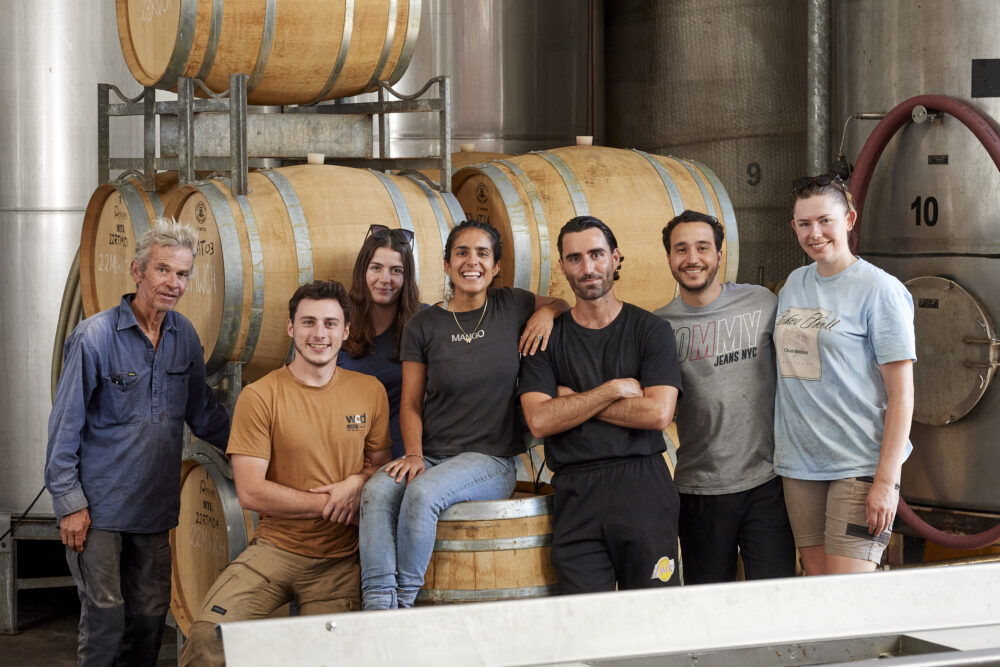
RAMANDAN
We’ve mentioned above the Hazara people who help us in the vineyard, not just at harvest but throughout the year. A friendlier group you could not meet, we all thoroughly enjoy their company, and they work hard, no matter what the weather. Not to put too fine a point on it, they have come from extremely tough lives in Afghanistan so even the hottest, dustiest day in the Moss Wood vineyard is still a pretty good place to be.
With this as background, in 2021, as we came to the end of the picking and were striving to finish and get the last of the fruit in before the rain, we found, rather oddly it seemed at the time, the picking team was slowing down. The problem was obvious, even though it took a while to click with us. The Hazara are devoted followers of Shia Islam and the onset of Ramadan meant none could eat or drink between sunrise and sunset. Bingo! The penny dropped and as always, effective communication was the key. Initially, they were much too polite to discuss it but once they explained it was Ramadan, which we at Moss Wood had overlooked, it was immediately obvious they were tiring because, of course, they were quite literally running out of steam. Once we understood what was happening, we made sure we picked an appropriate amount each day for the number of pickers we had available, a rule we’ve applied in every vintage since.
These days, we start harvest with two simple questions for the Hazara. What’s the price per tonne they want for the picking? And, when does Ramadan start?
Although from a Christian background, many years ago, Keith had experience with Ramadan while studying at Roseworthy College in 1977. During that era the college ran a program specialising in dry land farming and which drew participants from across north Africa, who lived in the student accommodation with all rest of the locals. During Ramadan, which Keith knew nothing about and was on a steep learning curve, there was often fun and games in the dormitory, with the African boys partying at night while everyone else was trying to sleep. Fast forward to 2021 and he eventually understood exactly what was going on.
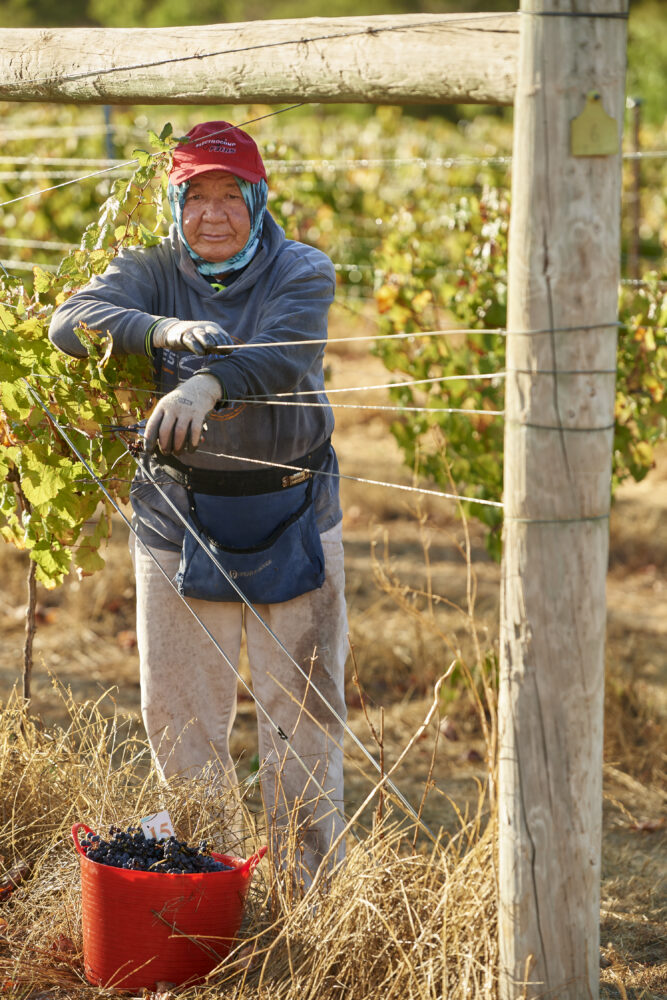
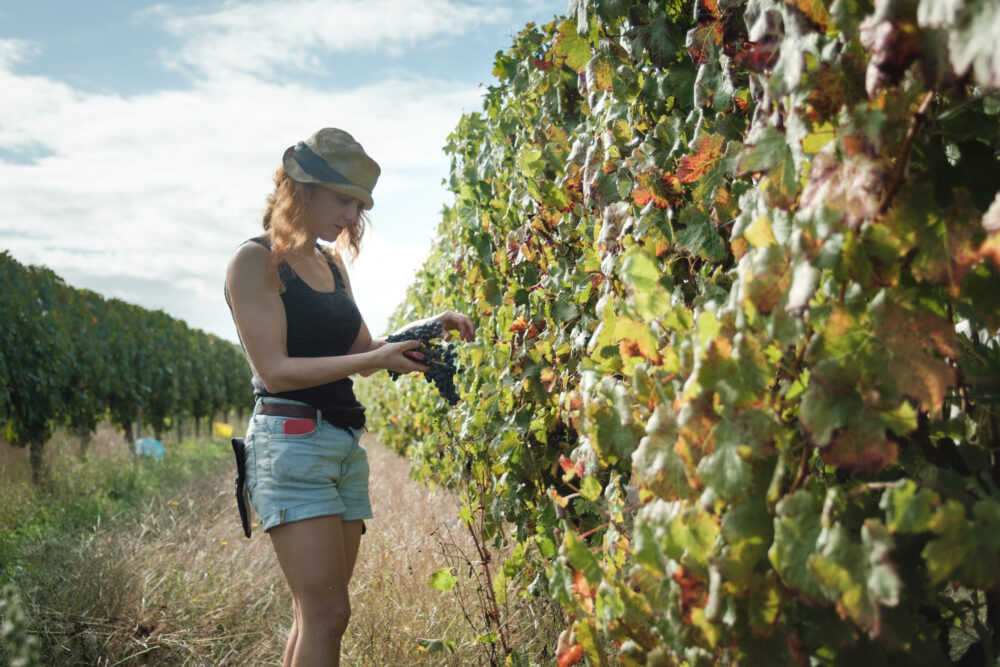
Lachancea thermotolerans
Well, that’s a heading not often seen in a Moss Wood newsletter but it’s a story worth telling.
In 2021, we had in our vintage crew Dr Ana Hranilovic, who had recently completed her PhD at the Australian Wine Research Institute in Adelaide. Her research topic was the yeast Lachancea thermotolerans and its potential role in winemaking. In a nutshell, by metabolising sugar to produce not only alcohol but also lactic acid, the yeast is able to improve the natural acidity of a wine. Warm vintages can be difficult because natural acidity in the grapes is lower, but using a yeast strain like Lachancea thermotolerans will help to manage that problem.
In our little trial, the one batch fermented by Lachancea thermotolerans had an acidity roughly 50% higher and an alcohol level 0.3%V/V lower than the Control. We certainly showed it works and may be a useful tool for the future. Thank you, Ana!
© FRANCES ANDRIJICH
© BEN DELFS
Order
OUR WINES:
Contact
MOSS WOOD:
Location: 926 Metricup Road, Wilyabrup WA
Postal: PO Box 225, Cowaramup WA 6284
Phone: +61 8 9755 6266
Fax: +61 8 9755 6303
Follow us on
SOCIAL MEDIA:

